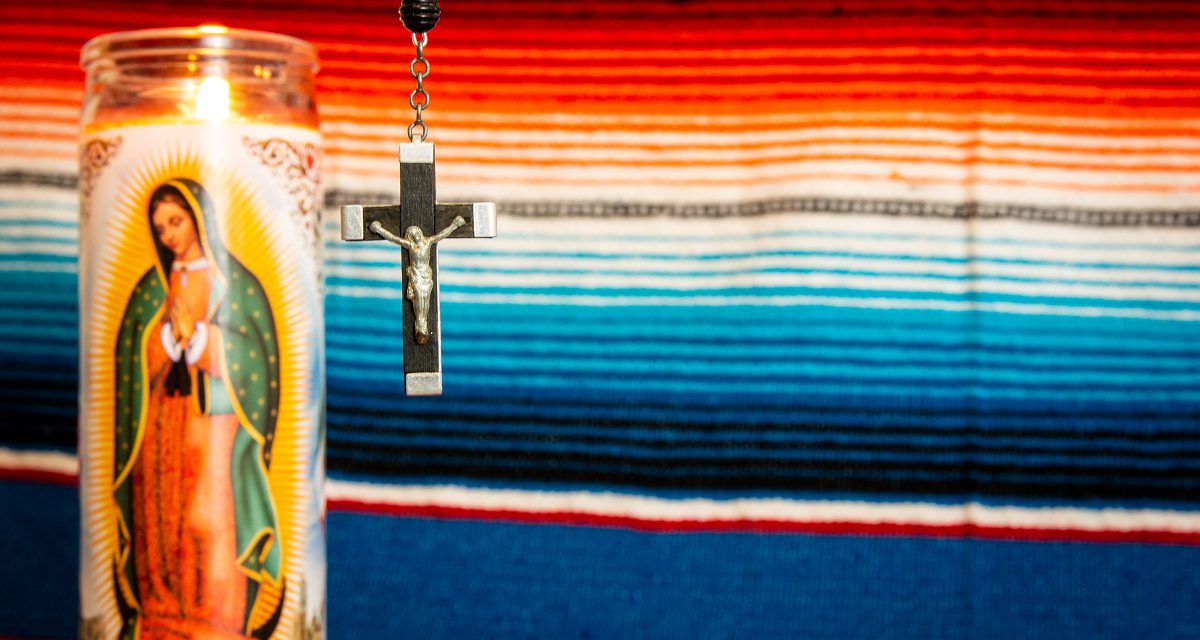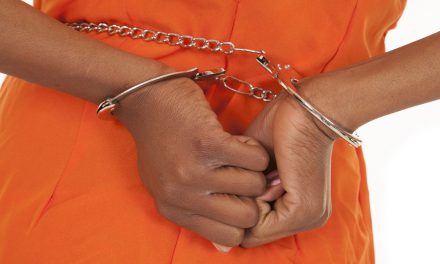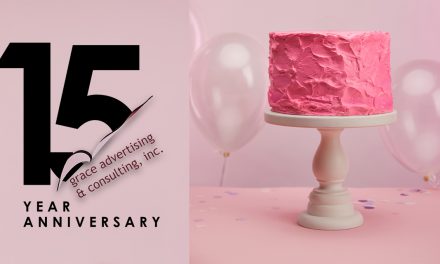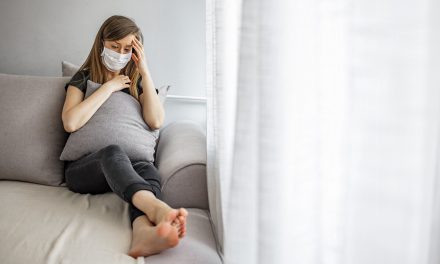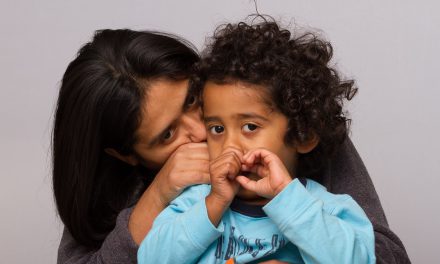When Fabian “Spade” Debora ran across Interstate 5 near his Boyle Heights home in Los Angeles, he was hallucinating, paranoid, high on meth amphetamine, convinced the cops were chasing him. He ran from the demons—addiction, abandonment, neglect, domestic violence and gang affiliation. He ran from the angels—his wife, his children, his mother. He ran from himself—a lost soul, seeing no salvation in the hell that had become his life.
“I had lived a life of selling drugs, dodging bullets.” Debora, a tagger—a graffiti artist—and member of a Los Angeles gang, felt his pain and hopelessness finally catch up to him.
As he ran, however, the wind surge from a passing truck seemed to lift and carry him to the safety of the center divider. He looked up into the sun’s light. Thoughts pummeled him. He looked for the police helicopter, but there was none.
“I kept thinking I should be dead,” says Debora. “And then I thought, ‘My kids.’ I had once thought they could save me, help me turn my life around, but it wasn’t the case. I had to save myself for them.”
That was July 28, 2006. On Aug. 1, he entered rehab. Six months later, he took another leap of faith. He made his way back to a man he’d met when he was just ten years old, who had, even then, offered him a safe haven from gang life that would surely lead to either prison or death. “I went back to Homeboy Industries.”
Homeboy Industries
At Homeboy Industries, Debora’s life as an artist and saved soul began. Located in Los Angeles’ Chinatown, the nonprofit began in 1988 as a national model of a successful gang prevention, intervention and transformative organization. Its mission is to provide jobs and “hope, training, and support to formerly gang-involved and previously incarcerated men and women.”
Homeboy Industries founder and executive director, Father Greg Boyle, or “Father G,” as he is known around the barrio, sees beyond tattoos and rap sheets to get to the heart of what makes former gang members walk through the doors in the first place. The women and men want to leave gang involvement behind and find refuge, change, hope, and a chance for redemption.
Using best practices and alternative solutions, Homeboy Industries believe incarceration is not the answer—jobs are. Their slogans include “Jobs not Jails” and “Nothing Stops a Bullet Like a Job.”
More than 20,000 come through the doors annually, for one reason or another, says Boyle. The overarching goal is to see individuals heal from trauma. If they can do this, they can reduce recidivism, reduce substance abuse, improve social connectedness, improve housing safety and stability, and aid in family reunification.
But participants come from incredibly difficult circumstances. They may be wary, unable to trust, as Debora was.
Still, Boyle welcomes them into Homeboy’s community of kinship and love to address their complex needs in a therapeutic environment. He has learned that “A homie with a job or an education may reoffend, but a healed homie never will.”
The core program is an 18-month paid re-entry and job training program to improve their readiness skills. They can gain experience through Homeboy Bakery and Homegirl Café, or newer enterprises such as silkscreen and embroidery, electronics recycling, catering, online store, Homeboy gear, and grocery, market, organic farming, and merchandise outlets. Homeboy Diner now has locations in Los Angeles City Hall and the Los Angeles International Airport.
The program was recognized as a nonprofit model by First Lady Laura Bush when she visited the site in 2005 for the national incentive program, “Helping America’s Youth.”
Since the coronavirus pandemic hit in 2020, its programs have gone virtual and their Global Homeboy Network has become a blueprint for over 400 organizations around the world. Partner organizations are in more than thirty states and twenty countries such as Australia, Great Britain, Zimbabwe, Mexico and Uganda.
According to GuideStar, which monitors nonprofits, in 2020, Homeboy earned nearly $18 million in revenue, including government grants and donations. Expenses to run the programs are more than $17 million. In 2019, Homeboy offered 31,000 class sessions in academic, life skills, arts/enrichment, and work readiness, more than 4,000 individual therapy sessions provided by licensed Mental Health clinicians, and more than 11,000 laser tattoo removal treatments. Nearly 100 clients landed jobs. Forty earned high school or associate degrees or vocational certificates. Twenty-four students enrolled in college for the first time, and 4 individuals graduated with an associate degree.
But for participants, it has always been more than just the numbers.
Coming Home
Boyle welcomes each participant with compassion and that was what Debora needed and found. “He had said that the doors would always be open to me,” says Debora, who is now 45.
He didn’t believe it until Boyle took him into his office to try to understand why he was a gang member. It reminded Debora briefly of stints in the principal’s office so many years before. Unlike those days, however, Boyle was not there to punish or demoralize. He wanted to get Debora on the road to recovery, so he cut to the chase. “He asked me, ‘What is your pain? What is your trauma? What is your need?’”
The pains, surprisingly, were the same as when he was ten. He was yearning for love. He wanted to belong. To be of value. To create an alternate reality, breaking free from demons handed down generations. Debora’s father was an addict and did jail time. “The police would have my dad cuffed on the kitchen floor,” says Debora. “He’d be high on heroin and they’d take him out.”
Debora had never known when he’d come home to see his mother with a black eye or worse. He felt the stinging repercussions of addiction and domestic violence, neglect and abandonment at their worst. And then suddenly, his life mirrored theirs. “I was thirteen when I started smoking weed, ditching school, was first introduced to violence, and gave my mom a hard time,” he says. “There was no father of the house to look up to. I found acceptance in gangs.”
He somehow survived gang wars and racial rifts and later alcohol, crack cocaine, meth, and worse. He had tried to come clean but had faltered time and again.
Boyle listened intently, blessed him, recommended long-term counseling, asked for a commitment to stay clean, and hired Debora on the spot as a receptionist. “You’re exactly what God had in mind when he created you,” Boyle told him.
“It was the first time anyone had really listened without judging me,” says Debora. “That’s when I realized there is a God, and He had given me a second chance.”
Taking him under his wing, Boyle also urged Debora to pick up a paintbrush to revive the artistic talent that had lain dormant too long. Boyle connected him to artist mentors and had him enroll in art classes. He encouraged him to go back to school and attend programs offered within the walls of Homeboy Industries.
Debora faced his demons, did what was recommended, and resurrected his creative spirit. His art came back to life with a flourish of color and he began to heal with every brush stroke. Art soothes my soul and my spirit,” he says. “I’m allowing my spirit to catch up in finding the truth of who I am.”
He developed his style by studying Mexican traditional art and the techniques of Diego Rivera and Frida Kahlo, but then studied other muralists and artists. For four months in 2009, Debora worked as an apprentice with San Antonio-based Vincent Valdez, learning depth and the magic of light, shading and texture. Debora’s paintings sell between $3,000 and $8,000. “I know my work is priceless, but I am an emerging artist.”
Where once his canvas had been the Los Angeles River basin for graffiti, now his profound work was being exhibited worldwide. On many trips, he represents Los Angeles artists on behalf of Homeboy Industries, says Boyle. His mural, Lost Angels, was painted on a street wall in Rome, inspired by author Luis Rodriguez and his book, Always Running. It was a play on the unforgiving street life in Los Angeles.
At art exhibits, Debora tells anyone willing to listen that using drugs and gang banging will only lead to death. He opens up about his downward spiral to addiction, how his mother tried to get him to stop, how he once weighed in at 107 pounds, how he almost died four times at the hands of rival gangs or overdose.
He is not afraid to talk about Boyle as a lifeline and God as a forgiving healer, an anchor that grounds him now. He reiterates that change is possible for anyone—no matter their darkest rock-bottom moment.
“It takes courage for someone to walk through those doors and take the first step,” says Debora. They learn to trust Boyle and his credo: everyone deserves a second or third or many chances.
Stepping Out of the Comfort Zone
What makes it easier to step out of their comfort zone is the family-like support system that has been missing most of their lives is solid at Homeboy. Once they go through an orientation, they decide if they can get through the 18-month-long process—which includes random drug tests, tattoo removal, and counseling for everything from legal to mental health and social services. Educational opportunities abound, as well as job skills training and recovery sessions. Computer classes are offered just as often as parenting and yoga classes.
“You’re always working on yourself,” says Debora. “It will be a lifetime process.” That commitment doesn’t faze him.
One of the first things he went through when he made his commitment to himself and to Boyle, was to remove his visible gang tattoos. “The service was started because the homies weren’t getting hired with tattoos plastered on their bodies,” said Boyle.
Approximately 25 doctors volunteer their time to offer the free service. Gang tattoo removal is a priority for those seeking jobs outside Homeboy, as are court-ordered removals. There is a wait list—up to one year—for others wanting tats removed. It’s a tedious, painful experience that has a wait time between each session.
Debora pulled down the collar of his navy-blue polo sweater. “It took me eight sessions to get this off.” A faint remnant of dark ink remains of what was once his gang affiliation: “L.A.,” bold letters, big enough to cover the front of his neck. He admits the process was painful. “It was worth it,” he says simply and shrugs. “I’m not the man I used to be.”
Homeboy Art Academy
During twenty years of sobriety, Debora became a rising star, not only as an artist, but as a mentor and a living example of hope. Pre-COVID, Debora walked the halls, hair slicked back in a ponytail, confident and outgoing, greeting everyone by first name, shaking a hand, pausing to listen. He pointed out classrooms and administrative offices on the second floor, including his own, and the “Wall of Fame” that highlighted photos of employees.
On the first floor, the reception area would be packed with people waiting for appointments with counselors. He passed the Homeboy store to enter the bakery and café where the scents of garlic competed with sugary sweetness. Grabbing a cookie, he would stop and speak to employees there.
Each individual seemed to warrant interaction, however brief.
“He’s become a wisdom figure in the office,” explained Boyle.
Debora became a state certified drug counselor and oversaw the drug counseling services program at Homeboy by day and worked on his art by night. He became a storyteller, speaking across the country about his journey and the way art can heal. His art was exhibited in venues around the world. He collaborated with other city programs and artists and found mentors. He earned scholarships—one from actor Edward James Olmos to continue with his painting and personal work. In 2000, he painted the sets for Mr. Olmos’ TV series American Family.
Olmos invited him to share his story of redemption through art in his documentary Voces de Cambio, produced for the Discovery Channel in 2007.
Sharing their stories is incredibly important, says Boyle. It’s a reminder of celebrating life. Debora took that to heart.
“He tells us we can no longer be ashamed of our past because it’s as powerful as our present,” explains Debora. “It’s a blueprint for my children and for others I can mentor so they don’t have to go through years of pain and the long route to see their value.”
Speaking can also change perceptions. “It’s for those people who believe that drug addicts don’t change—like police officers, teachers, and politicians. I’m proof they do.”
He never imagined he could come this far. His confidence gave him courage to take another big step. In 2016, he left Homeboy Industries. “Every artist needs to reach new milestones. I had to grow. It was heartbreaking for me, and Father G. Tears were shed, but it was time.”
A mentor offered him a studio space where he was able to launch “SomosLAArte.” He continued to work with more outreach and creative arts programs.
He returned to Homeboy Industries stronger, willing to collaborate with a ramped-up vision of art and healing. In 2018, his studio was converted to Homeboy Art Academy, where he serves as Executive Director.
The Art Academy is a redemptive alternative to an oppressive reality, says Debora. It offers a chance to become advocates for social justice through a variety of the arts, such as painting, photography, music, and theater. “Father Greg has given me his blessing,” he says. “A person gets parole for beating his wife, but can get locked up for graffiti. We wanted to petition the courts to give people the option to come to the Art Academy instead of jail. It’s restorative justice.”
His goal is to offer healing and transformation through culturally rich arts education and community events. HAA has served 75,000 system-impacted youth and adults each year in the Los Angeles area. Partnerships include juvenile detention centers, school systems, LAPD, and community-based organizations. More than 40 classes are offered weekly.
Programs challenge the gang subculture code of conduct and redefine the belief system, use traditional storytelling to gain a greater understanding to achieve self-advocacy and justice. Intergenerational art classes connect middle and high school youth with their parents to open up dialogue. A leadership program helps youth identify excluding factors in systems and advocate for change.
With each new youngster who finds his or her way to Debora, art becomes a self-awakening and rebirth. “I want to help nurture their gift because that thing they call their own brings meaning, value and self-worth when they look in the mirror.”
Falling Stars
At the studio almost daily, by seven o’clock, Debora paints, creates, practices what he preaches. Two of his murals will be installed in LA. in the spring of 2021. One is a 98-foot-long homage to Homeboy. The other, a 36-foot tall and 20-foot wide mural—features two women—a Mexican American-Chicana and an African American. He said it was his idea of unification. “I hope it brings a sense of peace and hope, safety and beauty to the low-income area. I want little girls to see themselves there, strong, a symbol of black and brown unity.”
He and his family continue to live in Boyle Heights. His dream is to own a home someday, but it won’t be far from his source of inspiration. “This is my community. It feeds me. Feeds me my subject matter, my cultura, my dreams,” he says. “Where else do people knock on your door and bring you tamales or ask for your help?”
It doesn’t shake out that way for everyone. Debora’s childhood friend, David, was killed. “It rocked my foundation. It triggers memories of my past, but instead of scaring me or discouraging me, it drives me to be a voice for those like David who have been denied.”
He doesn’t think his seven children will be lured to that lifestyle because he and his wife, Elizabeth Cuevas, are a united front and are there for them. Cuevas embodies the strength of women and mothers he portrays in some paintings.
“I was an anchor for Fabian,” she says. “I stood through the darkest times because obviously I was young and in love. Now I see a hopeful life without drugs, gangs and violence that can lead the kids to gain a better education and successfully live a peaceful life.”
At one exhibit of his work, surrounded by Cuevas and three of their children, Debora placed his hand over his heart, the gesture at once tender and raw. “Sometimes I can’t believe she stayed with me through all this.”
Those themes of hope, redemption, and peace prevail. One of Debora’s self-portraits, Falling Star, is bold, with deep reds that exude a fire and brimstone kind of heat. At one exhibition, he explained to a small crowd what he had intended to portray. He stands with his arms outstretched, his daughter standing before him, carrying his heart. With the fenced off neighborhood behind him, he is keeping her from his past, ensuring her safety and innocence. In the red sky, high above them, there is a shooting star, heading toward earth. “My daughter and I—all of us—are just fallen stars.”
His memories of that day when he clung to life on that center divider on I-5 are still sobering and ground him. “I saw death, felt it, saw what it would do to the people I loved.”
Homeboy Industries saved him. He no longer runs. He’s no longer a “lost angel.” “I’m the voice of my community, a symbol of change and hope,” Debora says. “Now it’s my turn to drop those seeds that will flourish down the line. Art will return us to humanity.”
For more information, visit:

